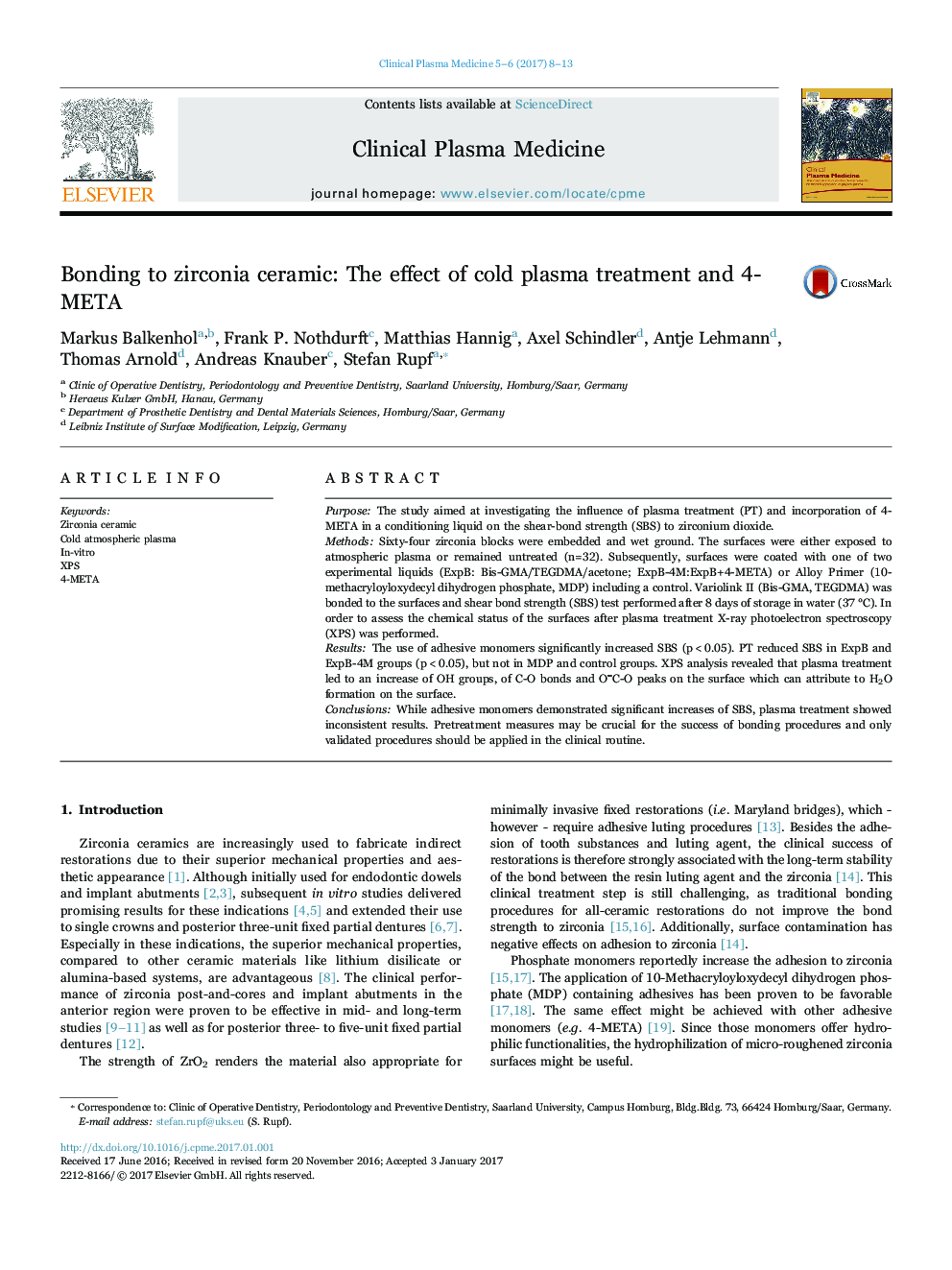| کد مقاله | کد نشریه | سال انتشار | مقاله انگلیسی | نسخه تمام متن |
|---|---|---|---|---|
| 5452910 | 1513834 | 2017 | 6 صفحه PDF | دانلود رایگان |

PurposeThe study aimed at investigating the influence of plasma treatment (PT) and incorporation of 4-META in a conditioning liquid on the shear-bond strength (SBS) to zirconium dioxide.MethodsSixty-four zirconia blocks were embedded and wet ground. The surfaces were either exposed to atmospheric plasma or remained untreated (n=32). Subsequently, surfaces were coated with one of two experimental liquids (ExpB: Bis-GMA/TEGDMA/acetone; ExpB-4M:ExpB+4-META) or Alloy Primer (10-methacryloyloxydecyl dihydrogen phosphate, MDP) including a control. Variolink II (Bis-GMA, TEGDMA) was bonded to the surfaces and shear bond strength (SBS) test performed after 8 days of storage in water (37 °C). In order to assess the chemical status of the surfaces after plasma treatment X-ray photoelectron spectroscopy (XPS) was performed.ResultsThe use of adhesive monomers significantly increased SBS (p<0.05). PT reduced SBS in ExpB and ExpB-4M groups (p<0.05), but not in MDP and control groups. XPS analysis revealed that plasma treatment led to an increase of OH groups, of C-O bonds and OËC-O peaks on the surface which can attribute to H2O formation on the surface.ConclusionsWhile adhesive monomers demonstrated significant increases of SBS, plasma treatment showed inconsistent results. Pretreatment measures may be crucial for the success of bonding procedures and only validated procedures should be applied in the clinical routine.
Journal: Clinical Plasma Medicine - Volumes 5â6, June 2017, Pages 8-13